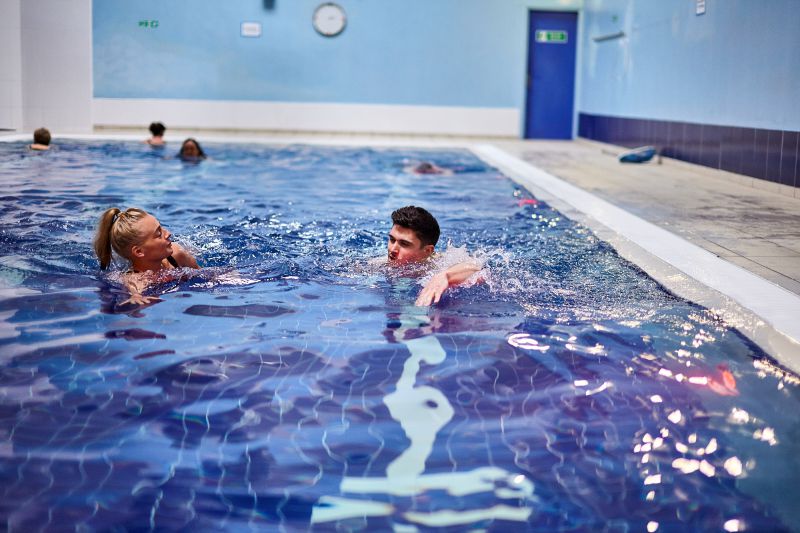There is currently no cure for asthma, but in recent years treatments have been developed to relieve symptoms and reduce the risk of an attack. If asthma is well controlled, sufferers should be able to exercise, have fun and keep fit. Research has shown that a healthy diet and active lifestyle can improve the quality of life of asthmatics, although fear of an asthma attack may make people anxious about exercising. The key is to discuss with your doctor the best forms of medication to control your symptoms, and to choose carefully what forms of exercise you undertake, what you enjoy and what you can do safely.Swimming is one activity that many asthma sufferers find is easier and more effective than other forms of exercise for the following reasons: -
• Done regularly, swimming strengthens the lungs and may improve lung function. Breathing is timed and precise, promoting greater lung capacity and an intake of oxygen.
• Swimming can improve your cardiovascular fitness, and if you are fit, asthma symptoms are less easily triggered.
• The constant repetition of swimming strokes improves muscle endurance and because water is much denser than air, the higher resistance causes muscles to be strengthened and toned.
• The warm, humid atmosphere of the pool can make breathing more comfortable.
• Gentle swimming should not leave you hot and breathless, unlike other aerobic activities.
• If a high pollen count or cold temperatures trigger your asthma, exercising in warm water in an indoor pool, where airborne allergens are low, may help.
• Swimming has positive psychological benefits, reducing anxiety, stress and tension.
Please remember however, pool chemicals and disinfectants, interacting with pollutants in the pool, can trigger an asthma attack, so it is advisable to choose a well-ventilated pool with high standards of water treatment, and have your inhaler to hand at all times.

What should a simple swimming programme look like?• Always start your session with a warm-up, to reduce breathing discomfort and the risk of an asthma attack.
• Try a variety of different strokes to relieve boredom and to exercise different muscle groups. For example, breaststroke uses your pectoral and latissimus dorsi muscles to sweep the arms inwards against the water and the glutes and quadriceps to power the kick.
• Try using a kickboard to rest your arms and concentrate on leg movements to propel you through the water and strengthen your leg muscles. Alternatively, use a pool buoy between your thighs to work on your arms and upper body.
• If you’re a really keen swimmer, you can use special neoprene gloves with webbed fingers to improve your technique, overall fitness and muscle tone.
• In addition to straight swimming, why not try aqua-aerobics for a great low-impact, high resistance workout that burns calories, builds endurance and increases flexibility.
It’s interesting to note that asthma is actually very common among elite athletes, particularly professional swimmers. Certainly, asthma did not prevent Adrian Moorehouse from winning the 100m breast stroke at the Seoul Olympics or Rebecca Adlington from collecting four medals at the Beijing and London Olympics. Even Mark Spitz, one of the greatest swimmers of all time with seven gold medals to his credit, is asthmatic. So, swimming may not make you a medal winner, but it could be a great way of getting fit, despite being an asthma-sufferer.
![]()
![]()
![]() blog
blog![]()
![]()
![]() blog
blog
